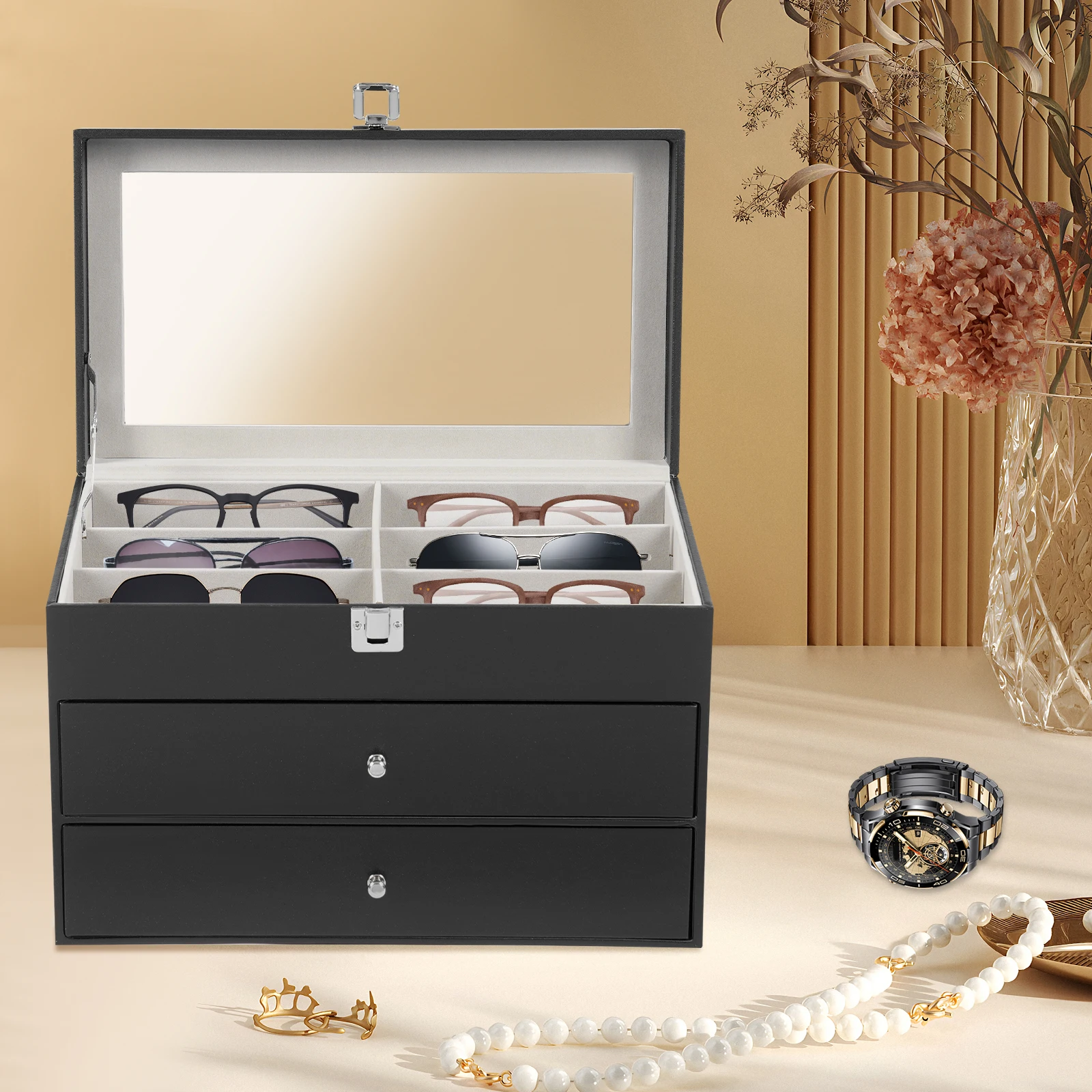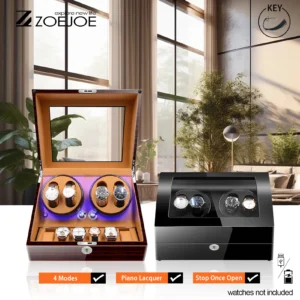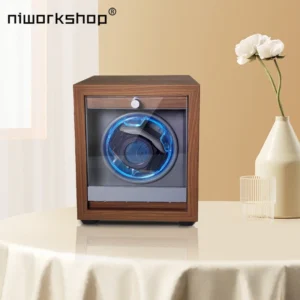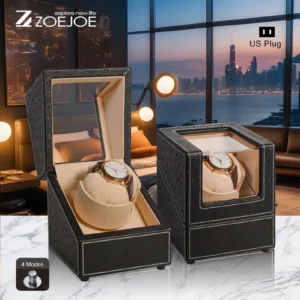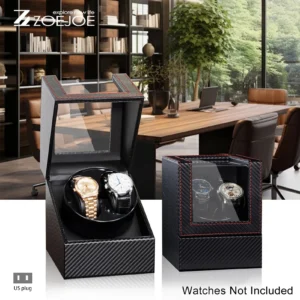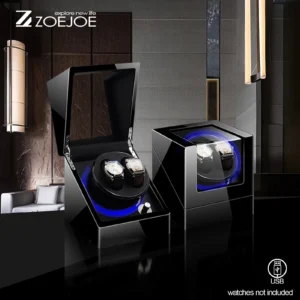1. Understanding the Crucial Role of Watch Winders for Automatic Timepieces
Automatic watches represent remarkable feats of engineering, designed to wind themselves through the natural movement of your wrist. When not worn regularly, these timepieces eventually stop running, requiring manual resetting of time and date functions. This is where watch winders become essential tools for collectors and enthusiasts alike.
Watch winders serve a critical purpose: they keep your automatic watches running when not on your wrist by mimicking natural arm movements. This continuous gentle motion ensures that:
- Your watches remain ready to wear at a moment’s notice
- Calendar and date complications stay accurate
- Watch movements receive proper lubrication through regular operation
- The lifespan of intricate mechanical components is maximized
With automatic watches ranging from several hundred to tens of thousands of dollars, choosing the right watch winder isn’t just about convenience—it’s about protecting your investment. The quality of your winder directly impacts the care your timepieces receive.
Given the importance of this accessory, warranty coverage and long-term reliability should be primary considerations in your purchase decision. Understanding watch winder motor specs helps you appreciate the technical aspects that contribute to a winder’s quality and durability. Throughout this guide, we’ll examine warranty provisions, reliability factors, and compare leading brands to help you select a winder that will safeguard your collection for years to come.
When exploring watch winders for your collection, remember that not all options are created equal, and the differences become apparent in their longevity and performance.
2. Decoding Watch Winder Warranties: Essential Coverage Elements
A watch winder’s warranty serves as both a quality promise and a safety net for your investment. Understanding the nuances of these warranties helps you evaluate which brands truly stand behind their products.
Most watch winder warranties range from 1-5 years, with premium brands typically offering longer coverage periods. The warranty length often reflects the manufacturer’s confidence in their product’s durability and craftsmanship. Beyond the duration, it’s crucial to understand what’s actually covered.
Standard warranty coverage typically includes:
– Motor functionality and mechanical components
– Electronic circuit boards and control systems
– Basic housing integrity and structural elements
– Manufacturing defects in materials and workmanship
However, warranties typically exclude:
– Cosmetic damage from normal use
– Issues resulting from improper handling or storage
– Damage from environmental factors like humidity or temperature extremes
– Problems caused by unauthorized repairs or modifications
When evaluating warranties, understanding the different types of motors in watch winders helps you assess what components are most critical for long-term protection.
2.1 Understanding Warranty Duration and Its Significance
The length of a warranty period speaks volumes about a manufacturer’s faith in their product’s reliability:
- Short warranties (1 year): Common among budget-friendly options, suggesting moderate confidence in long-term performance
- Medium warranties (2-3 years): Standard for mid-range winders, indicating good expected durability
- Extended warranties (5+ years): Typically offered by premium manufacturers who use higher-quality components
Longer warranties often correlate with better build quality and materials, though this isn’t always guaranteed. When a manufacturer offers an exceptional warranty period, they’re essentially making a financial calculation that their product will likely outlast the coverage period.
Extended warranty purchases make the most sense for high-end winders that house valuable watch collections. For moderately priced units, the additional cost may not justify the extended protection, especially if the warranty price approaches a significant percentage of the winder’s cost.
2.2 Component-Specific Coverage: What’s Protected and What’s Not
Different parts of a watch winder have varying lifespans and failure rates, making component-specific coverage details particularly important:
Typically Well-Covered Components:
– Motor assembly (the most critical component)
– Circuit boards and electronic controls
– Power supply connections
– Rotation mechanisms and gears
Limited or Partial Coverage:
– Exterior finishes (may have shorter coverage periods)
– Display elements like LED screens
– Cushions and watch holders (often considered wear items)
– Cosmetic features like glass windows or display lighting
Common Exclusions:
– Damage from power surges or improper voltage
– Problems from exposure to extreme environments
– Issues resulting from drops or impacts
– Normal wear of moving parts
Premium luxury watch winders typically offer more comprehensive component protection, especially for critical mechanical elements that directly impact watch care.
2.3 The Warranty Claim Experience: What to Expect
Even the most generous warranty has limited value if the claim process is difficult or time-consuming. Understanding what to expect when filing a claim helps set realistic expectations:
Documentation requirements: Most manufacturers require proof of purchase and the original warranty card or registration.
Initial assessment: Companies typically request photos or videos demonstrating the issue before authorizing a return.
Return shipping responsibility: Many warranties don’t cover the cost of shipping the unit back for repair, which can be substantial for heavier winders.
Repair timeframe: Industry standards range from 2-6 weeks depending on the complexity of the repair and parts availability.
Replacement vs. repair policy: Some companies offer direct replacements for certain issues rather than repairs, especially during the early warranty period.
Response time and ease of contact with customer service represent significant but often overlooked aspects of warranty quality. Brands with dedicated support teams and clear claim processes generally provide a better ownership experience when issues arise.
3. Key Factors Affecting Watch Winder Reliability and Longevity
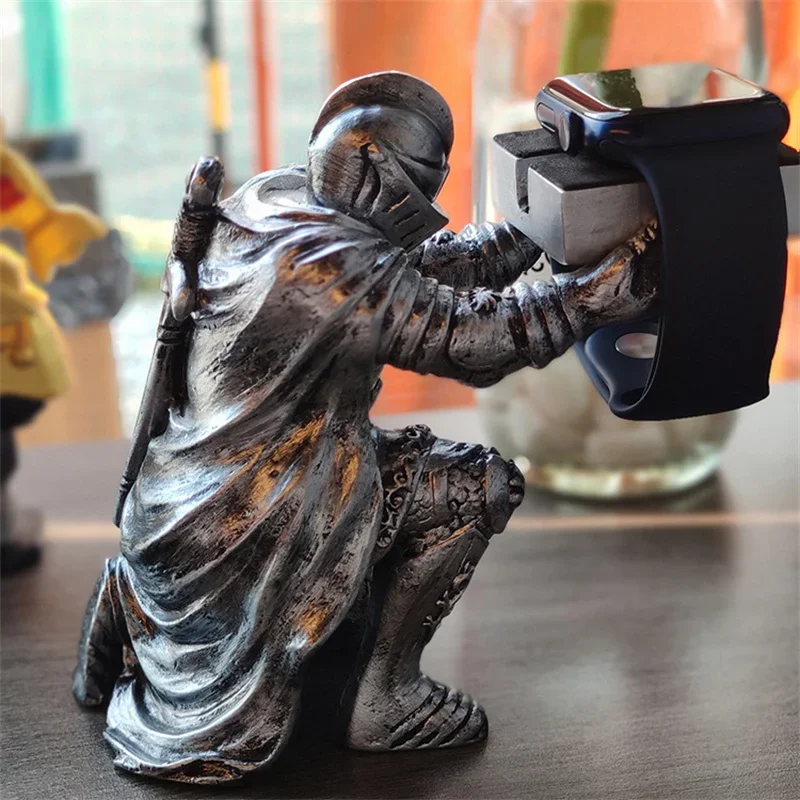
Understanding the technical factors that influence a watch winder’s reliability helps you make an informed choice beyond just warranty terms. These elements determine whether your winder will serve your collection faithfully for years or become a maintenance headache.
3.1 Motor Quality: The Heart of Your Watch Winder
The motor is undoubtedly the most critical component affecting a watch winder’s reliability. Japanese Mabuchi motors have established themselves as the gold standard in the industry, known for their exceptional balance of quiet operation and longevity.
These precision-engineered motors typically deliver:
– 5-7 years of continuous operation under normal conditions
– Consistent rotation speed without fluctuation
– Lower operating temperatures that reduce component stress
– Minimal noise even after extended use
In contrast, generic motors often found in budget winders may last only 1-3 years before showing signs of wear. The quality gap becomes especially apparent in continuous operation scenarios, where inferior motors generate more heat, consume more power, and produce more noise over time.
For collectors with valuable timepieces, understanding watch winder motor durability factors is essential for proper long-term care. Motors that maintain consistent rotation speeds provide more reliable winding for automatic watches, while those with fluctuating performance can potentially over-wind or under-wind your timepieces.
Many watch enthusiasts prioritize quiet watch winders for bedroom placement, making motor quality doubly important for both reliability and noise management.
3.2 Build Quality and Materials: Evaluating Durability Factors
The materials used in a watch winder’s construction significantly impact its longevity and ability to protect your timepieces:
Housing Materials:
– Solid wood: Offers excellent durability and natural humidity regulation, though susceptible to environmental changes
– Engineered wood: Provides good stability but may have shorter lifespans depending on quality
– Metal: Extremely durable but may transmit more motor vibration
– High-grade plastics: Varies widely in quality; premium composites can be surprisingly durable
Critical Components:
– Hinges and closures: Brass or steel hardware outlasts zinc alloy or plastic alternatives
– Glass elements: Tempered glass resists scratching and breaking better than acrylic
– Cushions: Microfiber and genuine leather maintain shape and softness longer than synthetic materials
Environmental factors significantly affect durability, with humidity being particularly important. Quality automatic watch winders incorporate proper ventilation and moisture-resistant materials to prevent internal condensation that can damage both the winder and your watches.
3.3 Programming Features That Enhance Reliability
Advanced programming capabilities don’t just offer convenience—they directly impact the longevity of your watch winder:
Programmable Turns Per Day (TPD) settings allow you to match the winder’s activity precisely to your watch’s requirements, preventing excessive motion that can accelerate motor wear. Most automatic watches need between 650-1800 TPD, with the optimal setting preventing both under-winding and unnecessary strain on the winder motor.
Direction control options (clockwise, counterclockwise, or bidirectional) are equally important for both watch care and winder longevity. Different watch movements have specific direction requirements, and being able to program these precisely reduces unnecessary rotations.
Rest period programming, available in higher-quality winders, extends motor life by preventing continuous operation. These intermittent pauses allow components to cool and reduce overall wear without compromising winding effectiveness. Understanding how watch winder rotation cycles work helps you optimize these settings for both your watches and the winder itself.
3.4 Common Reliability Issues and Prevention
Even quality watch winders develop predictable issues over time. Knowing what to watch for helps extend your winder’s useful life:
Common Problems:
– Inconsistent rotation speed or stalling
– Increasing operational noise or vibration
– Power connection instability
– Timer irregularities or programming failures
Preventative Measures:
– Periodic rest periods for continuously running winders
– Regular dust removal from interior mechanisms
– Proper placement away from direct sunlight and humidity sources
– Stable power supply with surge protection
– Occasional lubrication of moving parts (per manufacturer instructions)
Simple maintenance significantly extends winder lifespan. For example, keeping air vents clear of dust can prevent overheating, while ensuring cushions remain properly shaped prevents undue strain on the rotation mechanism.
4. Brand Comparison: Warranty Terms and Reliability Records
When evaluating watch winder brands, the combination of comprehensive warranty protection and proven reliability creates the strongest value proposition. The following comparison examines how leading manufacturers stack up across these crucial factors.
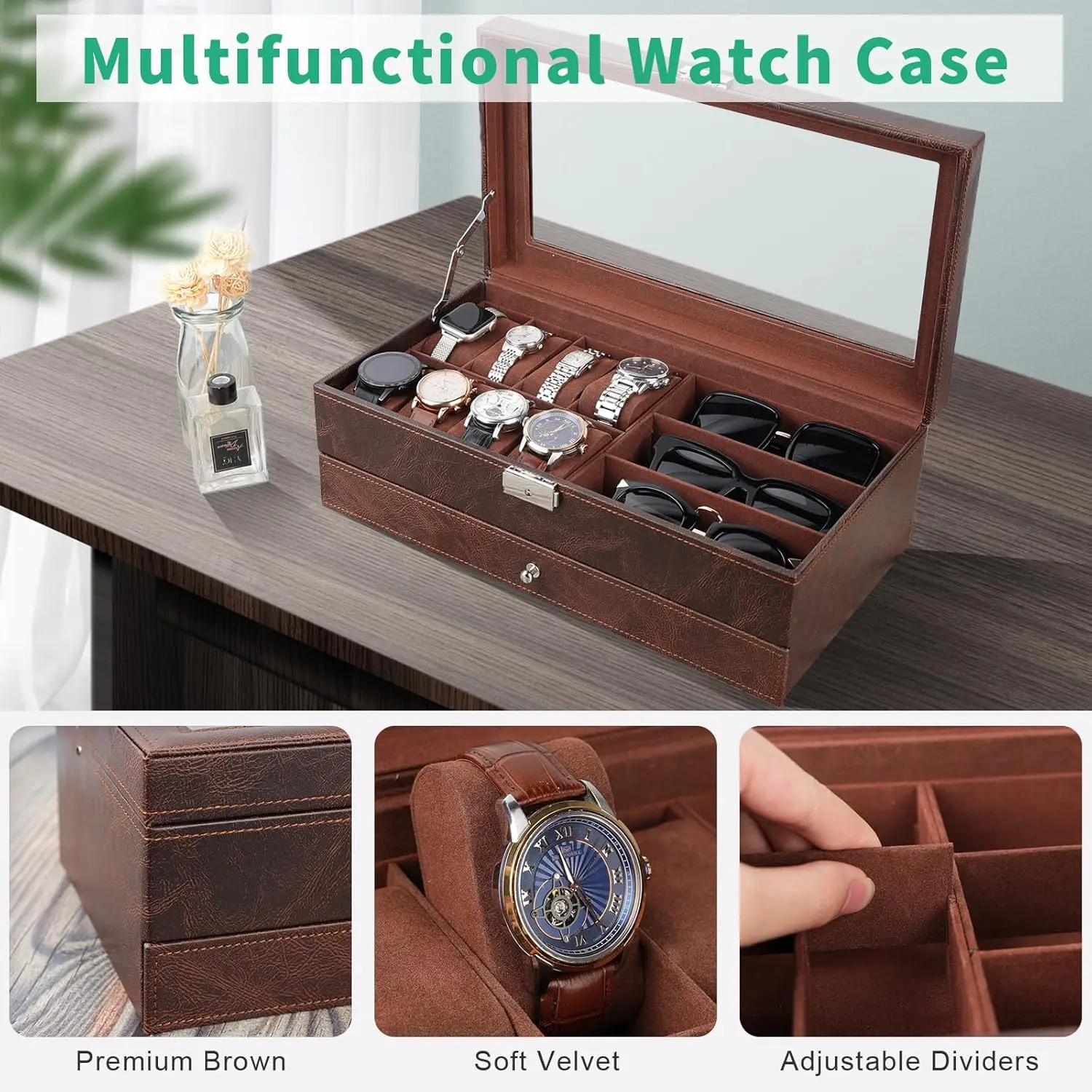
4.1 Premium Segment: High-End Watch Winder Brands
Premium watch winder manufacturers justify their higher price points through exceptional build quality, sophisticated programming options, and superior warranty coverage. These brands cater to collectors with valuable timepiece collections who prioritize long-term reliability.
Wolf, often considered the industry benchmark, offers a comprehensive 2-year global warranty covering all mechanical and electrical components. Their reputation for reliability stems from their use of patented rotation programs and sealed gear-drive systems that typically continue functioning flawlessly for 5-10 years. Their customer service consistently receives praise for responsive support and straightforward claims processing.
Orbita provides one of the most extensive warranties in the industry at 3 years, covering their distinctive programmable winding systems. Their use of specialized German motors and sophisticated power management systems results in exceptional longevity, with many users reporting 10+ years of trouble-free operation. Their warranty service includes complimentary shipping for authorized repairs during the coverage period.
Rapport London backs their handcrafted winders with a 2-year warranty that includes free parts and labor. Their dedication to traditional craftsmanship combined with modern engineering results in winders that maintain consistent performance characteristics throughout their lifespan. Their reputation for reliability is particularly strong with their wooden models, which demonstrate excellent resistance to environmental factors.
For collections with multiple timepieces, 4-watch winders from premium brands typically offer extended warranties that provide excellent protection for your investment.
4.2 Mid-Range Options: Balancing Quality and Value
Mid-range watch winder brands offer a compelling compromise between premium features and more accessible pricing. These manufacturers typically provide good warranty coverage while maintaining solid reliability records.
Versa offers a competitive 2-year warranty covering motor and electrical systems. User reviews consistently highlight their products’ reliability, particularly their use of Japanese motors that maintain quiet operation over years of use. Their warranty claim process receives positive feedback for efficiency, though replacement parts occasionally face availability delays.
JQUEEN provides an 18-month warranty on their full product line with consistent coverage terms regardless of price point. Their reliability record shows particular strength in their power management systems, though their cushion materials typically show wear before other components. Customer feedback indicates straightforward warranty claim experiences with minimal documentation requirements.
Chiyoda backs their winders with a standard 1-year warranty but stands out for their responsive customer service. Their winders demonstrate good medium-term reliability, particularly in their motor components, which maintain consistent rotation parameters even after extended use. Their warranty service includes a quick-response troubleshooting team that often resolves issues without requiring product returns.
4.3 Budget-Friendly Choices: Warranty Considerations
Budget-conscious collectors can still find watch winders with reasonable warranty protection and acceptable reliability, though compromises are inevitable at lower price points.
Heiden typically offers 1-year limited warranties focusing primarily on motor functionality. While their warranty period is shorter, their claim process is straightforward with minimal rejection reports. Their reliability centers on simplified designs with fewer potential failure points, though cosmetic elements tend to show age more quickly than mechanical components.
CHIYODA’s entry-level winders come with 12-month warranties that specifically cover motor operation. Their reliability record shows particular strength in power supply stability, though programming features demonstrate more variability in long-term performance. Customer feedback indicates responsive initial warranty service but limited support beyond the coverage period.
Diplomat provides a standard 1-year warranty with clear exclusions for cosmetic issues. Their winders demonstrate reasonable reliability for their price point, particularly in their mechanical systems, though control panels typically show the earliest signs of wear. Their warranty service operates efficiently for straightforward mechanical issues but has more limited support for electronic failures.
Automatic Watch Winder, Luxury Watch Winder, Single Watch Box
$307.39 Select options This product has multiple variants. The options may be chosen on the product page4 Watch Winder, 6 Watch Box, Automatic Watch Winder
$512.31 Select options This product has multiple variants. The options may be chosen on the product pageAutomatic Watch Winder, Single Watch Winder, Wooden Watch Holder
$201.76 Select options This product has multiple variants. The options may be chosen on the product pageAutomatic Watch Winder, Leather Watch Travel Case, Single Watch Winder
$146.30 Select options This product has multiple variants. The options may be chosen on the product pageAutomatic Watch Winder, Double Watch Winder, Leather Watch Boxes
$147.60 Select options This product has multiple variants. The options may be chosen on the product pageAutomatic Watch Winder, Double Watch Winder
$206.18 Select options This product has multiple variants. The options may be chosen on the product page
5. Expert Recommendations: Top Picks for Warranty and Reliability
After analyzing warranty terms, reliability records, and performance characteristics across dozens of watch winder models, clear standouts emerge for different priorities and budget levels.
5.1 Most Comprehensive Warranty Coverage
For collectors prioritizing maximum protection through warranty coverage, these options stand out:
Orbita Tourbillon models offer exceptional 3-year comprehensive coverage that includes both mechanical components and finish materials. Their warranty distinguishes itself through its inclusion of in-home service options for certain repairs and a straightforward claim process requiring minimal documentation.
Wolf Designs provides a 2-year global warranty that impresses with its consistent application regardless of purchase location. Their warranty coverage includes both mechanical and electrical components with clearly defined terms and minimal exclusions. Their service network spans multiple continents, ensuring accessible support regardless of your location.
Buben & Zorweg, while positioned at the luxury end of the market, offers comprehensive 2-year warranties that include on-site service options for their high-end models. Their warranty administration consistently receives praise for responsive communication and resolution speed.
5.2 Proven Reliability Champions
For those prioritizing long-term performance over warranty terms, these brands demonstrate exceptional reliability records:
Swiss Kubik winders feature innovative design principles that minimize moving parts while maximizing durability. Their rotation systems consistently operate for 7+ years without service requirements, and their power management systems show remarkable resistance to voltage fluctuations and environmental stressors.
Orbita’s Programmable series demonstrates exceptional motor longevity, with documented cases of units operating for 12+ years without mechanical failure. Their sealed gear systems prevent dust contamination, while their microprocessor controls maintain precise timing even after years of continuous operation.
WOLF Roadster models combine quality German engineering with practical design elements that enhance durability. Their patented rotation programs minimize unnecessary movement while their sealed bearing systems maintain smooth operation with minimal maintenance requirements.
5.3 Best Value: Balancing Protection and Performance
For collectors seeking the optimal balance between warranty protection, reliability, and cost-effectiveness:
Versa automatic winders provide the strongest value proposition through their combination of 2-year warranties and proven motor reliability. Their straightforward designs focus resources on critical components while minimizing potential failure points in less essential features.
WOLF Heritage modules offer entry points to premium reliability with moderate warranty periods. These models maintain the core engineering quality of the brand’s higher-end offerings while streamlining cosmetic features to reach more accessible price points.
Diplomat watch winders in the mid-range category deliver surprising durability despite modest warranty periods. Their focus on robust basic components rather than elaborate features results in consistent long-term performance even after warranty expiration.
6. Maximizing Longevity: Maintenance and Care Best Practices
Proper maintenance significantly extends your watch winder’s functional life beyond its warranty period. These best practices protect both the winder and the watches it holds.
Cleaning and Dust Prevention:
– Use microfiber cloths for exterior surfaces to prevent scratches
– Clean glass or acrylic components with appropriate non-ammonia cleaners
– Gently vacuum interior compartments yearly to remove dust
– Keep cushions clean with occasional compressed air treatment
Optimal Placement:
– Position winders away from direct sunlight to prevent fading and heat exposure
– Maintain stable room temperature (65-75°F/18-24°C) for optimal operation
– Avoid high-humidity environments like bathrooms or basement areas
– Keep at least 2 inches of clearance around air vents for proper cooling
Power Management:
– Use surge protectors for winders with AC adapters
– For battery-operated units, remove batteries during extended non-use periods
– Avoid frequent switching between power sources
– Consider dedicated UPS (uninterruptible power supply) for valuable collections
Usage Patterns:
– Program rest periods when watches aren’t actively being worn
– Rotate usage between multiple rotation positions if available
– Use TPD settings appropriate for your specific watches
– Consider occasional “rest weekends” for continuously running motors
For single watch winders, these maintenance practices are particularly important, as these units often run continuously for extended periods.
7. Is an Extended Warranty Worth It? Making an Informed Decision
Extended warranty options present a risk calculation that varies based on your specific circumstances. Understanding when these additional protections make sense helps optimize your investment protection strategy.
When Extended Warranties Make Sense:
– For premium winders exceeding $500 where repair costs would be substantial
– When purchasing brands with known reliability issues but desirable features
– If the winder will operate continuously rather than intermittently
– When the extended warranty covers components excluded from the standard warranty
When to Skip Extended Coverage:
– On budget models where replacement may be more economical than repair
– When the extended warranty duplicates credit card purchase protections
– If the warranty contains excessive exclusions or documentation requirements
– When the cost exceeds 20% of the winder’s purchase price
Manufacturer vs. Retailer Warranties:
Manufacturer extended warranties typically provide more comprehensive coverage specific to watch winder issues, while retailer warranties often use third-party services with less specialized knowledge. However, retailer warranties sometimes offer convenience advantages like in-store exchanges or broader coverage terms.
For collectors with valuable timepiece collections valued above $10,000, extended warranty protection often represents sensible insurance against potential repair costs. However, for more modest collections, investing in a higher-quality winder with better standard warranty terms may provide better long-term value than purchasing extended coverage on a lower-quality unit.
8. How to Evaluate a Watch Winder’s Quality Before Purchase
Identifying quality indicators before purchase helps you select a winder likely to provide years of reliable service. These evaluation strategies work for both in-person and online shopping.
Physical Inspection Checklist:
– Motor sound: Listen for smooth, quiet operation without buzzing or grinding
– Rotation consistency: Watch for steady movement without jerking or hesitation
– Door alignment: Check for precise fitting with even gaps around edges
– Material quality: Examine wood grain matching, finish consistency, and hardware solidity
– Weight assessment: Quality winders typically have substantial weight reflecting solid construction
Online Research Strategies:
– Seek detailed motor specifications (type, power consumption, noise rating)
– Look for transparent warranty information with minimal exclusions
– Research customer reviews specifically mentioning long-term ownership
– Check for clear descriptions of materials rather than vague terminology
– Verify availability of replacement parts and repair services
Red Flags for Reliability Issues:
– Extremely lightweight construction suggesting thin materials
– Excessive motor noise in demonstration videos
– Vague warranty terms with numerous exclusions
– Misaligned components visible in product images
– Limited or non-existent customer service contact options
Questions for Retailers:
– “What specific motor type does this winder use?”
– “Is the warranty administered by the manufacturer or a third party?”
– “What’s the average repair turnaround time for this brand?”
– “Are replacement parts readily available for this model?”
– “What’s the most common repair issue you see with this brand?”
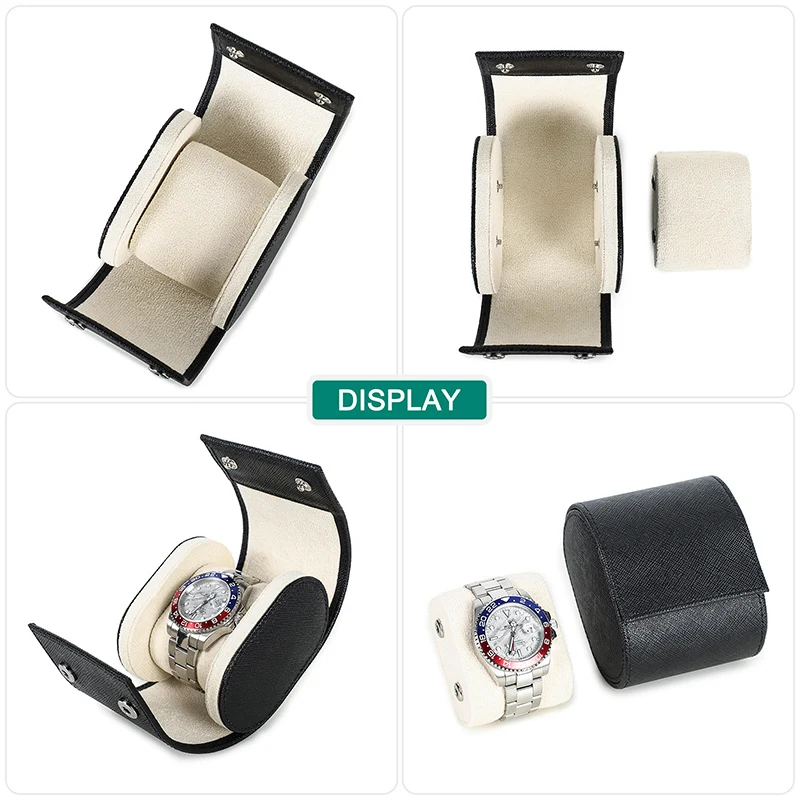
9. Frequently Asked Questions: Watch Winder Warranty and Reliability
Q: Do I need to register my watch winder for warranty coverage?
A: Most manufacturers require registration within 30 days of purchase to activate full warranty benefits. This typically involves completing an online form or mailing a warranty card with your purchase information.
Q: What commonly voids a watch winder warranty?
A: Warranties are typically voided by unauthorized repairs, removal of identifying labels, damage from improper power sources, or use in environmental conditions outside specified parameters (extreme temperatures or humidity).
Q: How long do warranty repairs typically take?
A: Most watch winder manufacturers complete repairs within 2-4 weeks, though this can extend to 6-8 weeks for premium brands requiring specialized parts. Some companies offer expedited service options for an additional fee.
Q: Is there a direct correlation between price and reliability?
A: While higher prices often correlate with better components and construction, the relationship isn’t strictly linear. Mid-range models from reputable brands frequently offer reliability comparable to premium options at more reasonable price points.
Q: Can a malfunctioning watch winder damage my watches?
A: Yes, winders with erratic rotation patterns or excessive vibration can potentially over-wind or stress watch mechanisms. This risk underscores the importance of choosing reliable models with appropriate programming options.
Q: How can I extend my winder’s lifespan beyond the warranty period?
A: Regular maintenance, appropriate placement away from environmental stressors, using correct TPD settings, and periodic rest periods all contribute significantly to extended operational life.
Q: Are batteries or AC power better for long-term reliability?
A: AC power typically provides more consistent operation for continuous use, while battery power eliminates risks from power surges or outages. Hybrid models offering both options provide the greatest flexibility and redundancy.
Q: How often should watch winder motors be serviced?
A: Quality watch winders rarely require specific motor servicing within the first 5 years. After this period, professional inspection every 2-3 years can identify early warning signs of potential issues before they affect your watches.

